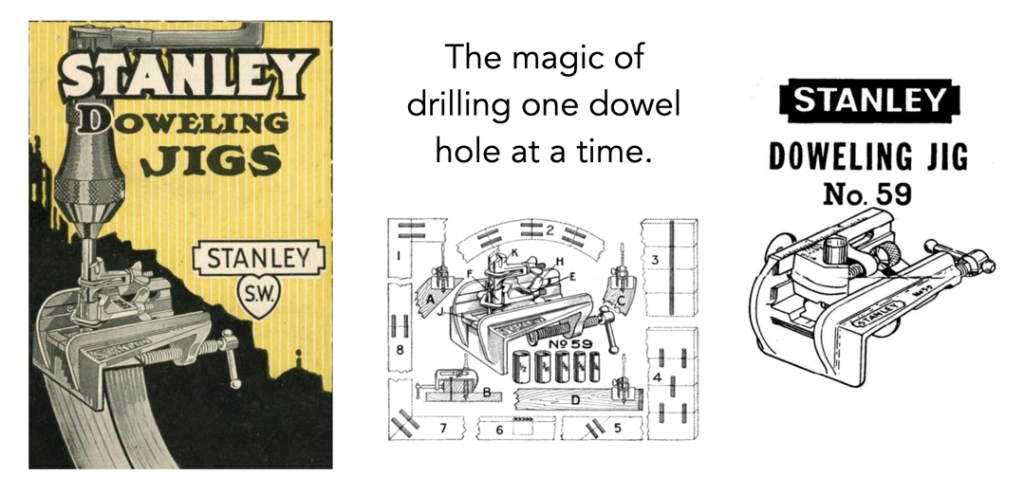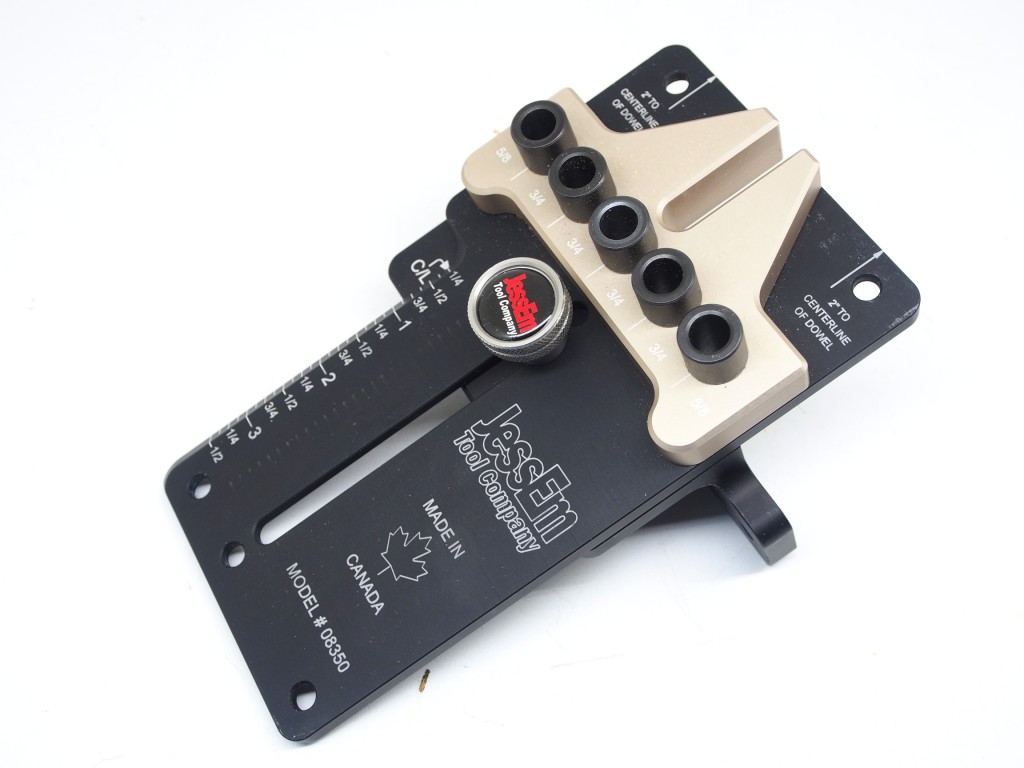Let’s talk about dowels. For years they have been the lesser cousins when it comes to joinery for furniture. They are often as maligned as butt-joints, but is the “dislike” warranted?
There are of course many ways to join two pieces of wood. For joining corners the most popular method is often dovetails – for aesthetics alone. Are dovetails always practical? You can make them by hand, or use a jig and router to speed things up, but they aren’t the be-all-and-end-all. Hidden joints are done in many ways – some people like using the tenons of Festool’s Domino system (the system is nice, bit pricey for the home user), others sliding dovetails (nice looking, but a lot of work for being mostly hidden), and still others use dowels.

Plain old dowels. The word dowel is an old English word analogous to “doule” which simply means a part of a wheel. It can also be traced its history in the Middle German language “dovel” which meant to plug. Now dowels have been around for quite a while. Viking longboats used trunnels (tree-nails or big dowels) to hold ribs together, and dowels were used to pin structural members joints together in buildings. However the use of dowels in furniture construction came as a late development, appearing in the early 19th century as an alternative to mortise-and-tenon joints.
For many years many woodworkers have shied away from them. This may be in part because of poor experiences with dowels in a certain self-assembly flat-packed furniture. But dowels are actually ideally suited to building with plywood, especially Baltic-birch. The multi-layered form of plywood is not well suited to the likes of dovetails, or mortise and tenon joints. It is also an ideal way of joining solid wood.
It also may be because the old-type dowel-jigs have always been somewhat mediocre. They weren’t really designed for placing dowels along the edges of large cabinet carcasses, or on mitre joints. The early ones, like the Stanley No.59 were versatile in application, but suffered from only being able to drill one hole at a time. The newer ones include the Veritas Dowelling Jig, which is good at some tasks, but not the most optimal solution , and the Woodpeckers Ultimate Dowelling Jig 2.0, one of their OneTIMETools… too short lived to form any sort of opinion on. But then there are what some consider the game-changers, the DOWELMAX and JessEm jigs. These tools let you put dowels in just about any configuration (each has its own pros and cons).


Then there is the dowel pins – spiral-grooved or multi-groove. The grooves, or flutes allow air to escape and glue to fill the voids as the dowels are inserted. Without them, it is possible that the dowels would not be able to be inserted completely into the hole. There is no real definitive answer as to which has the better holding power, but both are infinitely better than smooth dowels (unless the dowels are to be used in through-dowel situations where they are exposed). The dowels are generally like pressed-beech biscuits, with the compressed wood in a ⅜” dowel expanding about 1/32″ (0.8mm) on contact with moisture in the glue, creating a tight fit.
Dowels offer a convenient, inexpensive way to make a robust joint. They can give incredible strength to mitre-joints, and make carcass joinery quite efficient. Whether you choose to use them is really up to you, but they offer a method of joinery that is both inexpensive and sturdy. But how strong are they really? Well we will tackle the concept of dowel strength in the next post.

I’m a fan of using them as an alignment tool supporting other joinery or for non-load bearing applications. That being said, I’m still in the process of fixing my way through nearly 100 small chairs from our local pre-school. They were built 50+ years ago and dowels are the primary joint method throughout them. They must’ve done pretty good as a joint to last that long under those conditions.